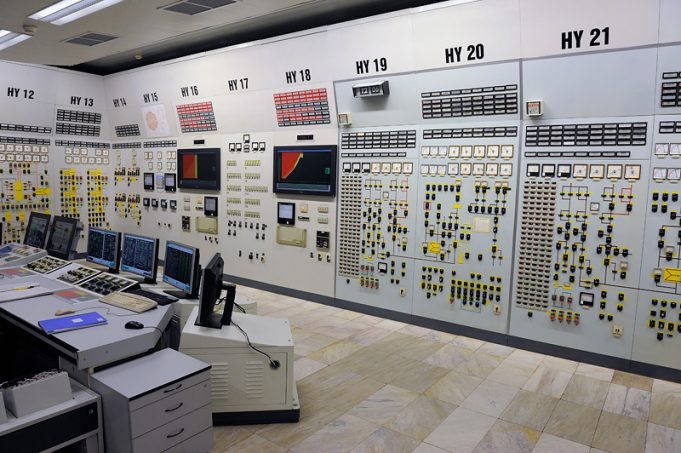Power factor controller
PF correction equipment includes PF controllers, one of its most essential components. Therefore, controlling and monitoring the cos (power factor) and system power quality is critical. It is now feasible to commission the RVC controller without a manual, thanks to an enhancement to the user interface that includes graphical icons. A slimmer casing takes up less room in the capacitor bank panel. The Hitachi Energy RVC keeps all of its prominent features and provides the industry with an easy-to-use, intelligent power factor controller.
PFC (power factor correction, often known as power factor controller) is a feature included in some computers and other power supply boxes that reduces the reactive power generated by a computer. In opposition to genuine passion, reactive power energizes the magnetic field. Electric companies charge for both actual and reactive power, which results in unnecessary costs even if reactive power has no real use for electronic equipment. The power supply that is being delivered to Europe must have PFC.
Factor Controller: What is it?
By functioning at a right angle to actual authority, an active power controller is a component that reduces the amount of energy produced by a computer when it invigorates the magnetic field. Other industries also employ PFC to lessen the power factor generated by high bay illumination.
Power factor correction: what is it?
The power factor correction procedure can raise a power supply’s power factor. Power factor adjustment is unnecessary for switching power supplies, which consume current in brief, high-amplitude pulses. There are active and passive methods for smoothing out these pulses. As a result, the apparent input power and input RMS current are decreased, and the power factor is raised.
Electrical equipment must be loaded with the same power as a pure resistor to achieve maximum efficiency without any reactive power. In both voltage and current waveforms, identical sine waves are present. However, because most circuits have reactive components, there is always a power lag, resulting in lower power factors. The AC main power will be utilized to its full potential in an ideal system. A phase-locked current and voltage can only be used in this manner. When the two phases differ, some of the energy from the AC outlet is wasted since it does not do meaningful work.
As a result, the power plant must generate more electricity to meet both usable and lost electricity demands. There will be an increase in capital expenditures in generation, transmission, distribution, and control. As well as contributing to global warming, the costs are passed on to the client. When an AC circuit contains an inductor, coil, solenoid, or inductive load, the current lags behind the voltage by 90° due to inductive reactance (XL). As a result, both resistance (R) and inductive reactance (XL) are measured in ohms, and the combined effect is known as Impedance. As a result of the combined impact of a circuit’s resistance and reactance, impedance, symbolized by the capital letter Z, is the resultant number reported in Ohms.
Read More: An Important And Comprehensive Overview Of Light Tube Skylight
Correction of the Power Factor Actively
Active PFC approaches are preferred for power supplies higher than 100W. Additionally, it is lighter, less bulky, and more effective for rectification. Basic PFC circuits detect the input voltage and current before modifying switching times and duty cycles to maintain the phase between the input voltage and current. Because the input AC voltage is automatically adjusted, the theoretical power factor is more significant than 0.95. Unlike passive PFCs, active PFCs may function with a broad range of input voltages. It does, however, need the installation of extra components, making it more complicated and expensive.
Applications
- Controlling cos in industrial and commercial networks is possible using the RVC standard controllers. Power factor control is used in buildings, the mining steel industry, chemicals, pulp and paper, cement, plastics, printing, and the food sector, to name a few.
- Uncorrected or inadequately adjusted power factors frequently result in higher electric bills for non-residential locations since the utility provider must compensate for reactive power losses through penalties and fees. Several nations have laws governing allowable minimum power factors.
- When non-linear loads are connected to a system, uncorrected power factors increase the likelihood of harmonic distortion in current and voltage cycles. The harmonics on the power line increase voltage fluctuations, which limit motor speeds and power. In a nutshell, harmonic distortion may make devices unstable, overheat, or even fail.
- Investing in methods to improve power factors, such as employing power supply with PFC capability, is a good idea.
What is Reactive Power?
It is a sort of electrical power that happens when the voltage and current of the energy traveling through the circuit vary. Reactive power does not affect the wattage produced by the machine. However, devices must function because coils require a magnetic field to perform. And the electricity they drew from grids is used to build this field. The circuit does not utilize the reactive power withdrawn from grids. It is saved and returned. As a result, traffic between two edges is always present. This puts a strain on energy conduits. You may suffer reactive consequences if this traffic is not regulated and reaches high levels.
Selection of a Power Factor Controller
Step number, supply voltage range, operation site circumstances, and menu indications are vital when choosing a power factor controller. Tense Electronics offers three-phase monophase power factor controllers and SVC-compliant, classical, and thyristor-triggered variants. Check our technical documentation before getting the most suitable exceptional-quality goods to match your demands.












